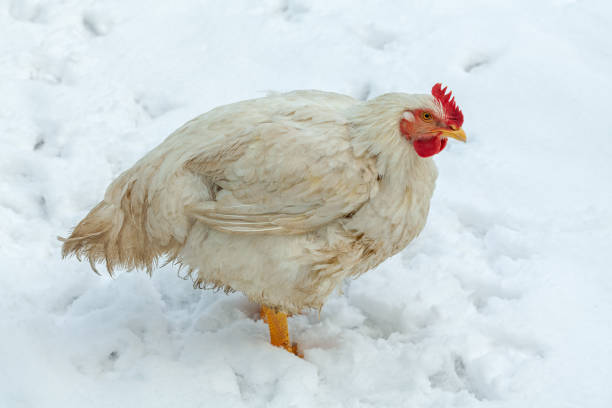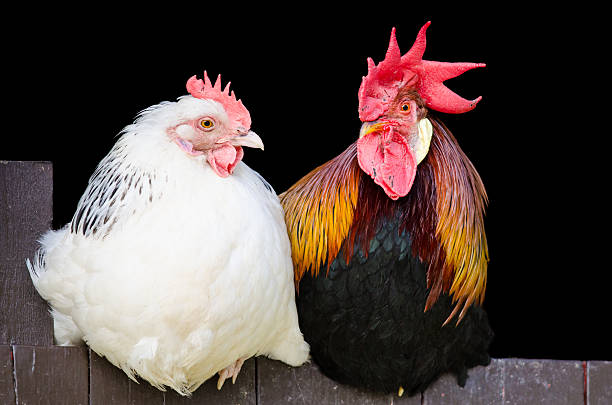Winter’s chill is tough on everyone, including your backyard flock! Frostbite can be a serious problem for chickens, especially if they aren’t protected from freezing temperatures. If you’re wondering how to prevent frostbite in chickens or how to recognize and treat it if it happens, you’re in the right place. Let’s dive into what frostbite is, how to spot it, and most importantly, the steps you can take to keep your chickens safe and cozy all winter long!

What Causes Frostbite in Chickens?
Frostbite happens when chickens’ extremities, like combs, wattles, and toes, are exposed to freezing temperatures for too long. Think of it as ice forming in their tissues—ouch! This can damage cells and cause serious discomfort. Frostbite is more likely if the coop is damp or lacks ventilation. Chickens with large combs and wattles or who aren’t as cold-hardy are especially at risk.
Symptoms of Frostbite in Chickens
Knowing the signs of frostbite early can help you take action before it becomes severe. Watch for:
- Discoloration (pale, yellowish, or darkened skin)
- Swelling in combs, wattles, or toes
- Blisters on the skin
- Pain or sensitivity to touch
- Behavioral signs like reluctance to move

How Serious is Frostbite for Chickens?
Frostbite in chickens can range from mild to severe. Mild frostbite may resolve with proper care, but severe frostbite can lead to tissue death and even the loss of comb or toe tips. The condition can be very painful, making prevention critical to your flock’s well-being.
Can Chickens Recover From Frostbite?
The good news? Yes, chickens can recover from frostbite if it’s mild to moderate. Recovery can take weeks, though, and any damaged tissue might not grow back. Severe cases may lead to permanent issues, so it’s best to focus on prevention.
How to Prevent Frostbite in Chickens
Let’s talk about the best ways to keep frostbite at bay. These tips will help create a safe, warm environment for your flock, even during the coldest nights.
1. Encourage Good Circulation
Keep your chickens moving! Activity improves circulation and helps keep their extremities warmer. Try setting up perches and roosts at different heights to encourage movement around the coop.
2. Reduce Water Surface Area
Large water containers increase humidity in the coop, which can make frostbite more likely. Use smaller waterers or heated bowls to keep water from freezing without adding too much moisture to the air.
3. Clean Up Droppings Often
Moisture from droppings can make the coop more humid. Regular cleaning, especially in winter, is essential. Opt for absorbent bedding like pine shavings or straw to manage moisture effectively.
4. Improve Ventilation
Good ventilation is key! It helps reduce humidity without making the coop drafty. Position vents near the roof to allow moisture to escape but avoid direct airflow on your roosting chickens.
5. Prevent Cold Stress
Cold stress can weaken chickens, making them more vulnerable to frostbite. Make sure the coop is well-insulated and avoid rapid temperature changes. A consistent environment keeps your chickens comfortable.
6. Apply Protective Salve on Vulnerable Areas
Try applying a bit of petroleum jelly or similar salve to your chickens’ combs, wattles, and feet as a cold barrier. This simple step can help protect against frostbite on chilly nights.
7. Add a Safe Heat Source (Like Chickcozy Chicken Coop Heater!)
A safe, gentle heat source like the Chickcozy chicken coop heater can give your flock a cozy spot without overheating the entire coop. This is especially helpful for older or sick chickens that need a bit of extra warmth.
8. Provide Electrolytes and Vitamins
Giving chickens extra electrolytes and vitamins during winter helps keep their immune systems strong. This can reduce their risk of frostbite and help them stay resilient against the cold.
9. Create Ample Roosting Space
Provide wide roosting bars so chickens can tuck their feet under their bodies at night. This keeps their feet warmer and reduces direct exposure to the cold air. Plus, it gives them more space to spread out comfortably.

How to Treat Chickens with Frostbite
If frostbite does happen, here’s how to help your chickens recover.
1.Move Them to a Warm, Dry Place: Bring affected chickens inside to gradually warm up in a safe, dry space. Avoid sudden temperature changes to prevent additional tissue damage.
2.No Rubbing!: It may be tempting to massage the frostbitten area, but this can make things worse. Just let it warm up naturally.
3.Apply an Antibiotic Ointment: Use a plain antibiotic ointment (without pain relievers) to prevent infection on any mild frostbite areas.
4.Watch for Infection: Keep an eye out for signs of infection, like oozing or an odor. If you notice these, consult a vet for help.
5.Give It Time: Frostbite healing can be slow, so be patient. Keep their coop environment warm, dry, and draft-free while they recover.
Wrapping Up
Winter doesn’t have to be stressful for you or your flock. By following these simple steps, you can protect your chickens from frostbite and keep them comfortable through the cold months. Invest in a few preventative measures, like Chickcozy’s chicken coop heater, to create a warm, cozy space. With the right setup, your chickens will thrive—even when it’s freezing outside!




Leave a comment
All comments are moderated before being published.
This site is protected by hCaptcha and the hCaptcha Privacy Policy and Terms of Service apply.